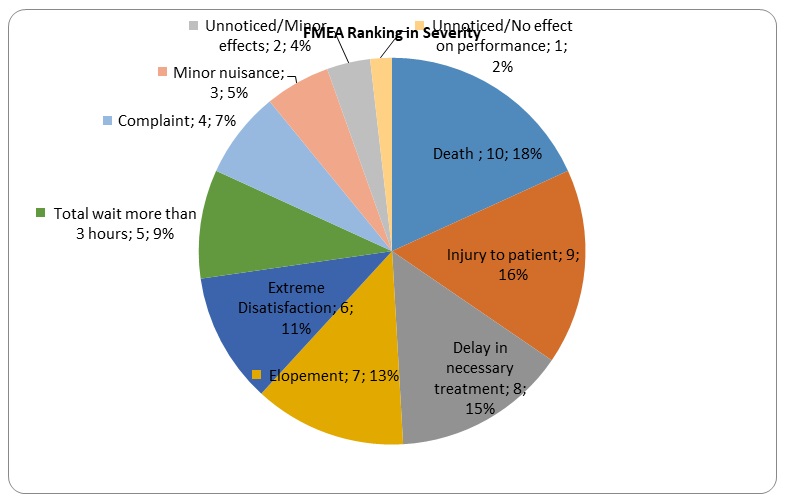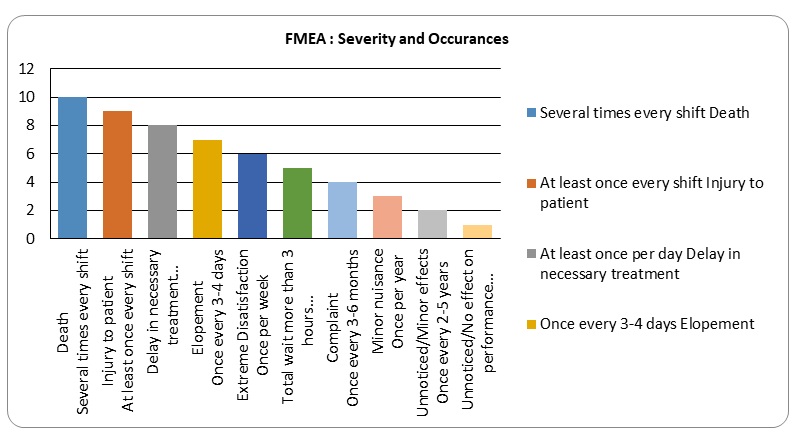Introduction
Most healthcare providers have shown interests in demonstrating quality improvement (QI). According to Agency for Healthcare Research and Quality (AHRQ), QI is “an interdisciplinary process to raise the likelihood of the delivery of best practices for preventive, diagnostic, therapeutic, and rehabilitative care to maintain, restore, or improve health outcomes of individuals and populations” (AHRQ, 2012). The process must involve combined efforts from various stakeholders so that healthcare provisions can lead to better outcomes among patients, system performance, and enhanced professional growth. We can note that healthcare efforts cannot achieve their full potential unless everyone participates. This essay shall focus on quality improvement plan that addresses length of stay for congestive heart failure patients (CHF).
Background (least two of the six dimensions of quality defined by the IOM)
The QI plan focuses on addressing issues of the length of stay for congestive heart failure patients and related outcomes such as deaths, injuries to patients, delay in treatment, elopement, and cases of extreme dissatisfaction among others. The QI plan strives to reduce such cases and enhances healthcare outcomes among patients of congestive heart failure and reduces days that are not necessary, and delays when attending to such patients.
The IOM has six aims as areas of improvement. The IOM believes that healthcare should be safe, patient-centered, effective, efficient, timely, and equitable. QI can have positive outcomes if provisions of healthcare become patient-centered. The providers must take into account CHF patients preferences, needs, values, and ensuring that clinical decisions rest on patients’ values. There are also cases of delays in treatment. Thus, the aim of QI should focus on timely delivery of services. This is possible through eliminating waits and risky delays among all stakeholders in provisions of healthcare. Injuries to patients are also issues of concerns among congestive heart failure patients. The process should be safe by avoiding injuries to patients from healthcare approaches that should help patients. It is also fundamental to take into account that some of these issues have a low probability of detection.
Theoretical underpinnings of change for the proposed quality initiative
Action research approach in QI aims at developing the best practices in provisions of healthcare in an organization. Thus, the approach takes into account organizational context, and how to develop best practices for healthcare provisions. QI aims at reducing discrepancies in work processes so as to enhance organizational abilities in achieving its aims. Action research utilizes an interactive cycle of process for identification of problems, planning, intervention, and evaluation so that the process results into developing innovative solutions by collaboration among stakeholders (researchers) (Berwick, 2008). The emphasis is on internal processes of an organization.
The processes normally results into quality improvement and offer staff expertise that can create best practices for improving healthcare provisions in the organization. It is also an essential approach because it recognizes what is feasible; thus, enhances chances of successful implementation.
Action research approach has some weaknesses that we must consider. The process relies mainly on a small sample of study e.g. an organization, or a unit of an organization. Action research focuses on such selected units of an organization. Thus, it is impossible to apply results in other areas or in a large context. The process also ignores existing knowledge in other organizations that have enhanced performances previously. The goal of action research does not focus on a wider area in the organization or the entire sector (Grol et al, 2007).
There is also a positive deviance approach. This theory combines some strength of various approaches in the larger organizational context as it seeks to combine processes, practices, and organizational contexts such as culture, norms, and leadership during implementation (Bradley et al, 2009).
Positive deviance approach relies on usages of common themes in an organizational setting. It works with complex and elaborate processes; thus, it is crucial for looking at a number of objectives, structures, and various underpinnings in the healthcare set ups (McCannon, Berwick and Massoud, 2007). This method also takes into account the activities of top performers in the industry (Bain, 2007). Positive deviance relies on scientific approaches in order to understand diverse organizational contexts. In addition, the approach uses statistical analyses for developing its evidence that are fundamental in supporting, or refuting claims obtained from qualitative methods. Thus, the approach provides practical solutions that are already applicable in some organizations. The statistical evidence provides a basis for effectiveness of these practices as implementation will results into increased performance.
Positive deviance approach uses self-reports from other organizations instead of internal trial processes. In most cases, such reports may have report biases. Organizational contexts, such as intergroup relations and the leadership support may present difficulties during measurements. This implies that some data may not be valid and lacks credibility. This method also tends to focus on external sources of data rather than generating data from internal processes of an organization. In turn, implementation and learning processes among staff who adopt external data may not be the same as those of organizations that develop their own processes and procedures for improvement. Therefore, additional efforts are necessary to ensure effective integration and adoption of such new practices. Still, relying on external practices may limit learning and creativity within an organization. Thus, for effectiveness, positive deviance approach has to combine sustained learning and discovery efforts so as to discovery new trends of handling the industry constraints (Bardach and Cabana, 2009).
Lean six sigma for quality improvement project, its model and summary of the practice improvement initiative
The six sigma model strives to produce near-perfect performance outcomes. Lean tools in six sigma help in identifications and elimination of wasteful processes in services deliveries so as to enhance efficiency of outcomes (Furman and Caplan, 2007). The model must address barriers that have affected organizational processes, and areas of implementation such as strategic alignments, sustainable improvements and enhanced progresses towards best practices. This model can only work through deployment planning in areas of roadmap and process management. The model also takes into account training of leadership/executives, black belt and green belt, and the lean six sigma experts. Facilitation of the model should also involve areas of value analysis, improvement workshops, and project mentoring.
Effective lean six sigma model must take into consideration patient-first principle. Implementation process must ensure that nurses adhere to this principle. This model of lean must also be flexible to allow nurses implement it with ease. The model must focus on specific areas that are response for problems in CHF and not the entire organization. The model must account for several details that may slowdown the implementation process; thus, outcomes should reflect inputs in the process. The details make the process complex and implementing team must find ways of making processes simply by eliminating elements that may not be necessary.
Description of an improvement tool (flowchart) for a better understanding of the process
A better understanding and achieving quality solutions need tools that can make such processes possible. Six sigma flowchart helps in understanding the exact problems and appropriate ways of achieving solutions. The initial stage involves identifications of problems behind poor service provisions among CHF patients. Problem identification also involves identifications of six sigma expertise to solve identified issues.
The next stage involves measurement. Measurement stage considers performance. It also involves abilities to fulfill needs of CHF patients. Data collection is necessary for comparison of the new and enhanced procedures that the team will create.
The next step involves analysis of collected data to provide information that can be useful in implementation of the desired process. The strongest points should form the best options for achieving success.
The next stage is planning. Different solutions derived need careful consideration. We must identify both short-term and long-term impacts of identified solutions. This stage also involves developing measures of counteracting any possible problem that may arise from the solutions.
The final stage in the flowchart is controlling. This involves consideration of collected information, created solutions, observed results, and identifications and verification of positive results on a continuous basis. Once we verify the results, we can consider exact measures for achieving the desired goals.
Resources required for system change
Analysis of human resources or stakeholders is mandatory in the system change for success of the project. Analysis of human resources helps in aligning qualified personnel with specific tasks requirements. These are usually multidisciplinary teams.
Communication and information sharing among team members is a functional process that enables teams to identify and specify purposes of their quality initiatives. It ensures that all stakeholders participate in the system change processes (Tucker, Nembhard, and Edmondson, 2007).
There should be structural protocol that the system change can adopt to serve various needs of stakeholders such as CHF patients and unit members. Such structures should identify sources of problems, identify sources of wastes, and provide opportunities of looking at the feasibility and measurable results of system change processes.
The evaluation method(s) of quality measures
Evaluation methods should identify process outcomes and means of measuring them. Exploratory technique in qualitative approach will enable the process discover the underlying causes of errors and failure modes in provisions of healthcare to CFH patients. Exploratory analysis can reveal factors related to processes steps, ways in which the process steps can go wrong, causes, and methods of detection. The responses will enable the process locate ineffective areas and causes and how stakeholders can avoid such problems in the future (Harrington, 2007).
Errors will occur with low probability of prediction and detection. Thus, failure modes and effects analysis (FMEA) will use quantitative modes in attempts to identify ways in which the process can fail, provide estimation, probability, and effects of such failures. We can monitor changes over time with clearly defined measurement tools that can provide objective information about the process.


Conclusion
QI is a dynamic process that must involve all stakeholders, necessary resources, and suitable methods of implementing system change processes. Effective QI must entail procedures for enhancing culture of improvement, identification, clarification and comprehension of problems. It should also involve all stakeholders, methods of evaluating system change strategies, continuous evaluation and monitoring, and reporting of results so as to create sustainable change.
References
AHRQ. (2012). Closing the Quality Gap: Revisiting the State of the Science: Quality Improvement Interventions to Address Health Disparities. Web.
Bain, K. T. (2007). Barriers and strategies to influencing physician behavior. Am J Med Qual., 22, 5–7.
Bardach, N. S. and Cabana, M. D. (2009). The unintended consequences of quality improvement. Curr Opin Pediatr, 21(6), 777-782.
Berwick, D. M. (2008). Berwick DM: The science of improvement. JAMA, 299, 1182- 1184.
Bradley, H., Leslie, C., Shoba, R., Laura, R., Ingrid, N. and Harlan, K. (2009). Research in action: using positive deviance to improve quality of health care. Implementation Science, 1(1), 1-4.
Furman, C. and Caplan, R. (2007). Appling the Toyota production system: using a patient safety alert system to reduce error. Jt Comm J Qual Patient Saf.,33(7):376–86.
Grol, R., Bosch, M., Hulscher, M., Eccles, M., and Wensing, M. (2007). Planning and studying improvement in patient care: the use of theoretical perspectives. Milbank Q.,85, 93–138.
Harrington, L. (2007). Quality improvement, research, and the institutional review board. J Healthc Qual.,29(3), 4–9.
McCannon, C., Berwick D., and Massoud, M. (2007). The science of large-scale change in global health. JAMA, 298, 1937-1939.
Tucker, A., Nembhard, M., and Edmondson, A. C. (2007). Implementing new practices: an empirical study of organizational learning in hospital intensive care units. Manage Sci, 53, 894-907.